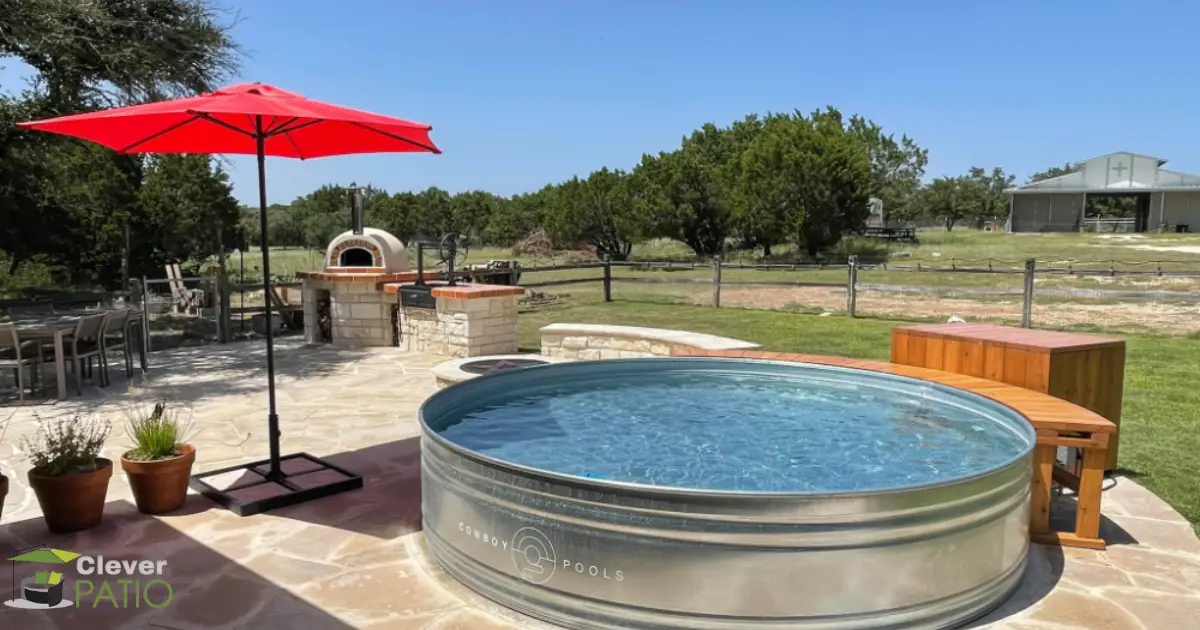As homeowners seek to downsize or simplify their lives, many are turning to patio homes as a desirable housing option.
A patio home is a type of single-family home that offers a low-maintenance, lock-and-leave lifestyle, often with shared amenities and community features.
In this article, we will explore the characteristics and benefits of patio homes, as well as considerations to keep in mind when considering this type of housing.

What is a Patio Home?
A patio home is a detached or semi-detached single-family home that typically features a small outdoor living space, often a patio or courtyard, as its central focus.
These homes are designed to offer a low-maintenance lifestyle, with minimal upkeep required both inside and outside the home. This type of housing may also be referred to as a garden home, cluster home, or villa.
Read More: Do Patio Homes Have Basements?
Patio homes are often designed with the needs of older adults or empty nesters in mind. They may offer a smaller footprint than traditional single-family homes, with fewer bedrooms and bathrooms, as well as lower ceilings and wider doorways to accommodate mobility aids.
In addition, patio homes may be located in age-restricted or active adult communities, where residents share common interests and amenities.

Benefits of Patio Homes
Patio homes offer several benefits that may make them an attractive option for homeowners seeking a low-maintenance lifestyle. Here are a few of the key advantages of patio homes:
1. Low Maintenance
One of the main benefits of patio homes is that they offer a low-maintenance lifestyle. Many patio homes are designed with features such as vinyl siding, metal roofs, and minimal landscaping, which require less upkeep than traditional homes.
In addition, patio home communities may offer maintenance services such as lawn care and snow removal, which can free up time for residents to enjoy other activities.
2. Lock-and-Leave Convenience
Another advantage of patio homes is their lock-and-leave convenience. Because these homes are often designed for part-time or seasonal residents, they may offer features such as security systems, automatic shutters, and community gates that make it easy to lock up and leave for extended periods of time.
3. Access to Amenities
Many patio homes are located in communities that offer shared amenities such as pools, fitness centers, and walking trails. These amenities can provide residents with opportunities for social interaction and physical activity, as well as access to resources that they may not have in their own homes.
4. Smaller Footprint
Patio homes typically offer a smaller footprint than traditional single-family homes. This can be an advantage for homeowners who are looking to downsize or simplify their lives. In addition, the smaller size of patio homes may result in lower energy bills and maintenance costs.
5. Customizable Design
While patio homes often offer a similar basic design, many communities offer a range of customization options that allow residents to personalize their homes.
This can include options such as upgraded appliances, additional storage space, and outdoor living features such as fire pits and built-in grills.

Considerations When Choosing a Patio Home
While patio homes offer many benefits, there are also some considerations that homeowners should keep in mind when choosing this type of housing.
Here are a few factors to consider when evaluating patio homes:
1. Homeowner’s Association Fees
Many patio home communities are managed by homeowner’s associations (HOAs), which charge fees to cover the cost of shared amenities and maintenance services.
Homeowners should carefully review the fees associated with each community to ensure that they are comfortable with the costs.
2. Community Restrictions
Some patio home communities may have restrictions on features such as pet ownership, home modifications, and parking. Homeowners should review the community rules and regulations to ensure that they are comfortable with the restrictions.
3. Location
Like all real estate, the location of a patio home is an important consideration.
Homeowners should evaluate the proximity of the community to amenities such as shopping, healthcare facilities, and entertainment options. In addition, they should consider factors such as the quality of the school district, access to public transportation, and the overall safety of the community
4. Home Size and Layout
Patio homes are typically smaller than traditional single-family homes, and may offer fewer bedrooms and bathrooms. Homeowners should evaluate the size and layout of the home to ensure that it meets their needs.
5. Resale Value
Like any real estate purchase, homeowners should consider the potential resale value of a patio home. They should evaluate the demand for patio homes in the area, as well as the overall strength of the local housing market.
In addition to these considerations, homeowners should also evaluate their own lifestyle and preferences when considering a patio home. For example, those who enjoy gardening or outdoor entertaining may prefer a larger yard or a home with more outdoor living space.
Conclusion
Patio homes offer a unique housing option for homeowners seeking a low-maintenance, lock-and-leave lifestyle. With their small footprint, customizable design, and shared amenities, patio homes can offer a range of benefits for those looking to downsize or simplify their lives. However, homeowners should carefully evaluate the costs, restrictions, and location of a patio home before making a purchase. By considering these factors, homeowners can make an informed decision and find a patio home that meets their needs and preferences.




Leave a Reply